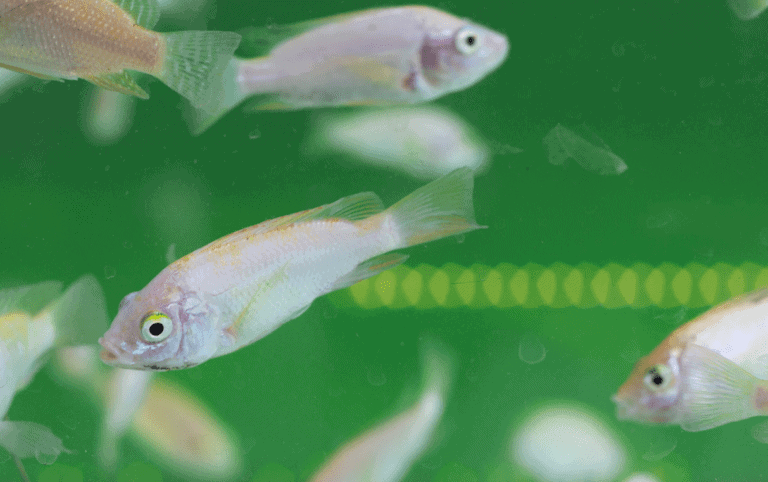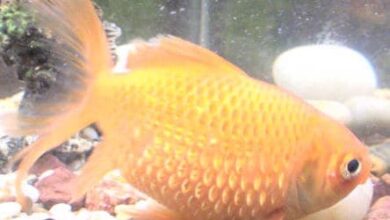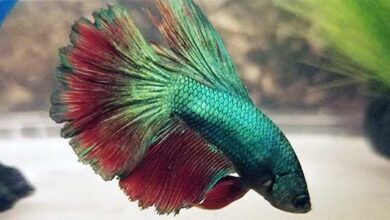viral diseases of fish


In the aquatic trade there are a number of viral problems that we have become accustomed to dealing with, these are mostly very specific and of course do not pose a threat to humans. Within fish diseases, today we are going to look at some of the more established viruses.
Lymphocystis in fish
Lymphocystis ( Lymphocystis) causes the growth of cauliflower-like lumps seen in tropical fish, both freshwater and marine. It is still occasionally seen in batches of freshly imported fish and the cure is simply to reduce stress and stimulate the immune system so things take care of themselves.
It is usually not life-threatening, but simply unsightly, so good water quality combined with stress reduction and a diet that strengthens the immune system are the keys to its cure.

carp pox
Carp pox (Cyprinid herpesvirus 1 or CyHV-1) is a herpesvirus that gives affected fish (usually koi) the appearance of waxy lumps, usually white in color. These usually appear when affected fish are exposed to environmental changes, such as temperature fluctuations, so they are seen more often in the colder months as this is a disease of pond fish.
Carp pox is another virus that is largely benign, and usually fish that are carriers will only show symptoms for a limited period each year before the spring heat activates their immune systems.

Both of these viruses are commonly seen and can be alarming, but they usually go away with little intervention from us, other than good parenting.
There are others that are much more harmful and if you feel the anguish of Covid-19, you may feel a little better knowing that you are not as bad as other poor creatures.
Dwarf gourami iridovirus (DGIV)
I remember a while ago an acquaintance caused chaos in his tank by adding a pair of Dwarf Gouramis (Trichogaster lalius). The male fiercely claimed a corner of the aquarium and proceeded to uproot plants to make a nest while he courted the stocky female.
They were colorful, sturdy, and cheap enough that she could afford them with pocket money. Over the last few years, these hardy fish have become a difficult fish to obtain, as many of them now suffer from the species-specific and incurable dwarf gourami iridovirus (DGIV).
This species is fairly short-lived anyway, but this may be related to a distribution found in areas that experience colder winters and sees them wither away when deprived of a slightly cooler seasonal rest.
Certainly, wild Indian imports tend to be small and silvery before they come into breeding condition, perhaps an area where some experimentation is needed. Either way, the lesson is to shop this species carefully and perhaps consider alternatives such as honey gourami (Trichogaster chuna).
Koi carp herpesvirus or HCK
The other viruses also target a single species, but this time a very important one: Koi (Cyprinus carpio). This is why we can no longer accept fish from customer ponds, as biosecurity is key to ensuring continued safety.
Koi herpesvirus or HCK (cyprinid herpes virus 3 or CyHV-3) is a notifiable disease like foot-and-mouth disease, with a mortality rate of up to 100%. Unlike the very innocent Carp Pox, HCK is activated at higher activation temperatures and therefore infected fish are undetectable at cooler temperatures, with sudden deaths occurring when temperatures rise.
All carp that arrive in our stores are now tested for HCK and, as with gouramis, many sources are now unsafe to buy, leading to the demise of the cheaper mass-produced koi that used to be the starting point for many pond keepers.
SPV (spring viremia of carp)
As if KHV wasn’t nightmare enough, a second disease: SPV (Spring Viremia of Carp) is a relative of rabies which is, as the name implies, a disease that kicks in in the cooler conditions of the season. spring at temperatures around 8ºC and below.
Unlike HCK, SVC has been found to occur in a variety of species and much work has been done to try to make our pets free of this disease.
So there’s an insight into some of the viral issues we’ve been quietly handling in the background for years. Who knows what the future will bring, but certainly this group of pathogens has never had a higher profile. They are just one of many things that have a lot to do with the price of fish, to paraphrase an old saying.
For now, I wish you good health and biosecurity until next time.





